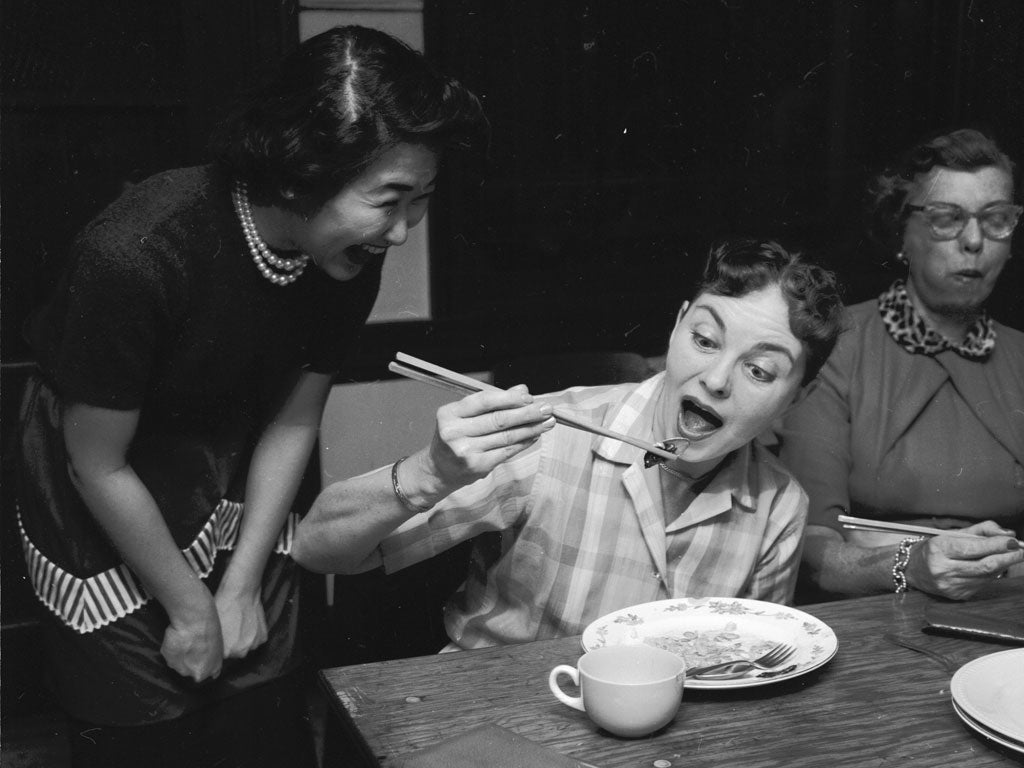The knives are out: Why do restaurants love to make dining so tricky?

Your support helps us to tell the story
From reproductive rights to climate change to Big Tech, The Independent is on the ground when the story is developing. Whether it's investigating the financials of Elon Musk's pro-Trump PAC or producing our latest documentary, 'The A Word', which shines a light on the American women fighting for reproductive rights, we know how important it is to parse out the facts from the messaging.
At such a critical moment in US history, we need reporters on the ground. Your donation allows us to keep sending journalists to speak to both sides of the story.
The Independent is trusted by Americans across the entire political spectrum. And unlike many other quality news outlets, we choose not to lock Americans out of our reporting and analysis with paywalls. We believe quality journalism should be available to everyone, paid for by those who can afford it.
Your support makes all the difference.Recently I had breakfast at a London branch of the popular Franco-Belgian bakery chain, Le Pain Quotidien. An integral element of the firm's rustic, continental brand image is its insistence on serving hot drinks not in a cup or mug, but in a bowl.
I tend to forget this when I suggest to friends that we go there because it does a great brioche – and then curse my bad memory as the dreaded bowl of warm brew is delivered to the table. This time, however, I was prepared. Might I have a cup instead of a bowl, I asked as I ordered my latté. No, said the waitress: we don't have cups. Cups are not hard to come by, I wanted to say. They're like bowls, only a little bit smaller and with a handle.
The bowl is inferior to the cup as a coffee-drinking device in at least two fundamental respects: first, it offers the drinker's fingers no protection from the heat and thus requires them to wait until the drink is tepid. Moreover, while one-handed drinking from a bowl is possible with practice, it remains a hazardous, spillage-prone technique, demanding the drinker's full concentration – and therefore discounting any chance they might have had of reading their liberal newspaper or Penguin Classic at the same time.
The waitress offered one alternative: a cardboard takeaway cup which, though it has no handle, is accompanied by a protective sleeve to prevent palm-scolding and small enough to hold comfortably in one hand – while tweeting, say.
I declined. I was enjoying my martyrdom too much. But the incident reminded me of just how easy it is to ruin an eating or drinking experience with inadequate or inappropriate tools.
On my first visit to Japan last month, for example, I was overjoyed to discover that sushi is not, in fact, intended to be eaten with chopsticks. I watched in wonder as one of my hosts dipped a piece of maguro tuna sushi in soy sauce, flipped it on its back and poked it into his mouth, fish-side down. Nobody in the restaurant was using chopsticks – so why is it that Marks and Spencer, Pret A Manger et al insist on including them in their plastic packs of flavour-deprived California rolls? Better a lemon-scented handwipe, surely? But no, they give us two-bite-size sushi and expect us to slice each piece in half with a pair of pencils.
Given that I grew up in a non-chopstick culture and am never likely to be especially skilled in their use, I'm frustrated by the notion that eating with a knife and fork in an Asian-themed restaurant would be doing the food a cultural disservice. (The Chinese invented paper, gunpowder, printing, banknotes, the compass. Can't they let Europe claim cutlery?) In the Far East, chopsticks are not just eating utensils, but symbols of good or bad luck in love and life.
There are differing rules of etiquette attached to their use in China, Japan, Korea, Taiwan and Vietnam. When in Hanoi, then, I'm content to do as the Vietnamese do. But when in Wagamama, I'd rather not have to sup my broth from a spoon the size of a salad server.
The misuse of eating paraphernalia doesn't just afflict the imported cuisines of our friends in the Far East and across the Channel: British dishes are affected, too, by trends taking precedence over practicality. Today, in gastropubs everywhere – and they are everywhere – lunches are being served not on plates, as is traditional, but in vast white bowls. This might be suitable for seafood linguine, or some sort of soupy lentil concoction with a white fish fillet on top. But not for pork belly and certainly not for Sunday roast. Trying to cut through tough crackling or carve a slab of beef, when you can only attack it from above, is near-futile.
And the tyranny of the bowl is but the thin end of the wedge. In eating establishments the length and breadth of the country, perfectly serviceable platters are being neglected in favour of wooden chopping boards and pieces of black slate. Chopping boards are for chopping, slates are for roofing, plates are for eating. And that, I'm afraid, takes me back to Le Pain Quotidien, which serves tartines – one of its signature dishes – on porcelain cheeseboards.
Next time, I'll try asking for a plate.
Join our commenting forum
Join thought-provoking conversations, follow other Independent readers and see their replies
Comments